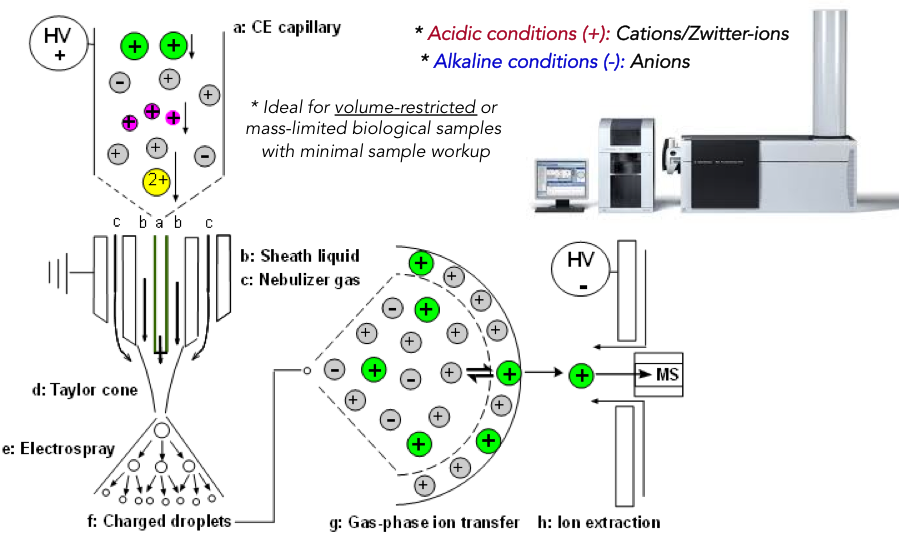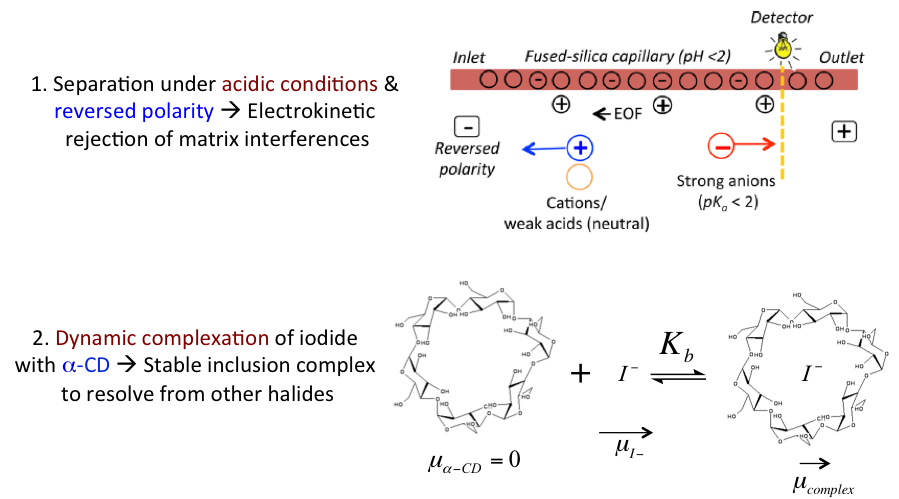Separation and Ionization Theory
The major separation platform used in our group is capillary electrophoresis (CE) due to its high efficiency, low sample volume requirements, versatile separation modes and direct compatibility for resolving complex mixtures of metabolites, as well as intact protein. A fundamental understanding of separation theory in CE is an essential feature to all projects in our research program. Electrokinetic and thermodynamic parameters that influence metabolite separations and reversible protein interactions in free solution are also examined in our work. New strategies for accurate prediction of migration behavior and detector response of different classes of metabolites are of primary interest to our group, which includes modeling of solute ionization responses when coupling CE to electrospray ionization-mass spectrometry (CE-ESI-MS). These fundamental studies are critical for deeper understanding of underlying separation and ionization mechanisms, which helps guide analytical method development. For instance, we are developing experimental and computational approaches for prediction of ion migration behaviour and their ionization responses based on the putative chemical structure(s) of a metabolite.

Fig. 1 Accurate modeling of the ion migration behaviour and solute ionization responses based on fundamental physicochemical properties of an ion (e.g., molecular volume, pKa/effective charge, hydrophobility/logD) when using CE-MS for virtual identification and quantification of metabolites.

Fig. 2 Fundamental design of a selective assay for resolution of trace levels of iodide from a million-fold excess of chloride in human urine when using CE with direct UV detection in conjugation with inclusion complexation during ion electromigration.
Recommended References:
- A. DiBattista,* D. Rampersaud, H. Lee, M. Kim and P. Britz-McKibbin “A High Throughput Screening Method for Systematic Surveillance of Drugs of Abuse by Multisegment Injection-Capillary Electrophoresis-Mass Spectrometry” Anal. Chem. 2017, 89, 11853-11861[Editor’s choice]
- A. Macedo,* K. Teo, A. Mente, M. McQueen, J. Zeidler, P. Poirier, S. Lear, A. Wielgosz and P. Britz-McKibbin “A Robust Method for Urinary Iodide Status Determination in Epidemiological Studies by Capillary Electrophoresis” Anal. Chem.2014, 86:10010-10015.
- L. A. D’Agostino,* K. P. Lam*, R. Lee* and P. Britz-McKibbin “Comprehensive Plasma Thiol Redox Status Determination for Metabolomics” J. Proteome Res. 2011 10, 592-603.
- K.R. Chalcraft,* R. Lee,* C. Mills* and P. Britz-McKibbin “Virtual Quantification of Metabolites by Capillary Electrophoresis-Electrospray Ionization-Mass Spectrometry: Predicting Ionization Efficiency without Chemical Standards” Anal. Chem.2009,81, 2506-2515.
